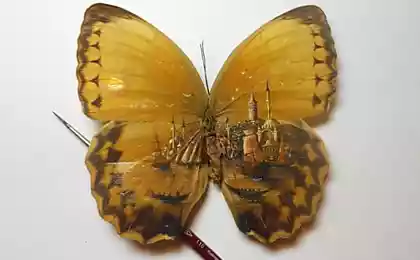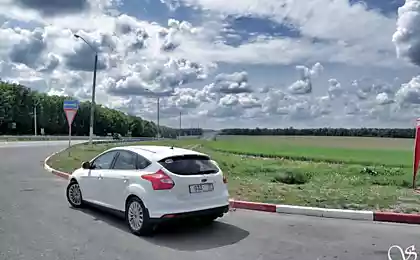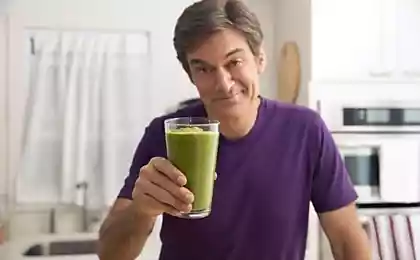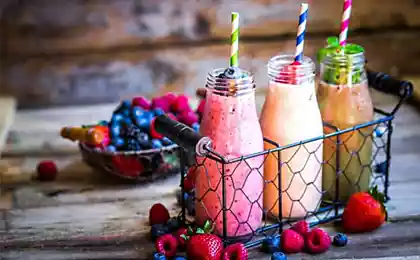1013
Calais
Calais (Ukr. Calais, krymskotat. Cufut Qale, Karaite. Dzhuft Kale) - a medieval
fortress city in Crimea (Ukraine), located in the district of Bakhchisarai in 2, 5 km
east of Bakhchisarai.
The name is translated from the Crimean Tatar language as a "Jewish fortress» (cufut - Jew, qale - fortress). Karaites called city Dzhuft Calais (from the Karaim language "double (na? Rnaya) Fortress" dzhuft - steam kale - fortress). Previously, the city was known as the Kirk-EF, Kirk-Or, Gevher-Kermen.
In an era Mengli I Giray the city received its current name. Typically, this is because
Karaism - religion inhabited castle Karaite people, akin to the equally Judaism,
Islam and Christianity, since all four Abrahamic religions tend recognition
Holy book of the Old Testament. However, only the latter is considered the only karaism
the source of faith. It is worth noting that in addition to the Karaites, the fortress and the community was Krymchaks professing
Orthodox Judaism. Karaites themselves after the city Dzhuft-Calais (in Karaite Dzhuft Kale -
"Steam Fortress") or just Kale (Kale - "Fortress»).
The town was founded probably in the V-VI centuries as a fortified settlement on the border of the Byzantine possessions.
It is likely that at that time it was called Fulla. The city with the same name found in different sources,
but historians can not uniquely identify which of the currently known settlements corresponds to it. The city's population
in this period consisted mainly of Alan.
In an era of domination in the Crimea Kipchak city came under their control and called Kirk-Ep.
In 1299 Kirk-EF was stormed and robbed Emir Nogay Horde army. In XIII-XIV centuries
the city was the center of a small principality, who was a vassal of the rulers
Crimean yurt Golden Horde. From the XIV century, the city began to settle and by the time the Karaites
Education Crimean Khanate they are likely to have accounted for most of the population of the city.
Kirk-EF was the seat of the first independent Crimean Khan Haji Giray I. After the base at
Mengli I Giree Bakhchisarai Khan's capital was moved there. During the Crimean Khanate fortress
It was the place of detention of high-ranking prisoners of war, and was located in the same state
Mint.
After joining the Crimea to the Russian Empire, the Karaites began to leave the castle and move to
other Crimean cities. By the end of the XIX century Calais was completely abandoned by its inhabitants.
The castle stayed a family caretaker.
Currently, most of Calais is in ruins.
In the west, the oldest part of it survived numerous caves carved into the economic
premises, the ruins of the mosque and the mausoleum of the daughter of the Golden Horde Khan Tokhtamysh Dzhanyke Khanum 1437
buildings. Also well preserved two kenassas (Karaite Temple) and one residential homestead,
consisting of two houses. Kenassas Karaite community is now being restored, and in the residential estate of
located exhibition devoted to the culture of the Karaites. In the eastern part of the city was not
surviving mint where the coins were minted Crimean and many residential buildings.
ru.wikipedia.org/wiki/%D0%A7%D1%83%...%B0%D0%BB%D0%B5
40 ph 1 Crimean midlands - one of the most beautiful landscapes.

2 Fortress and the city is located on a plateau, sheer on three sides.
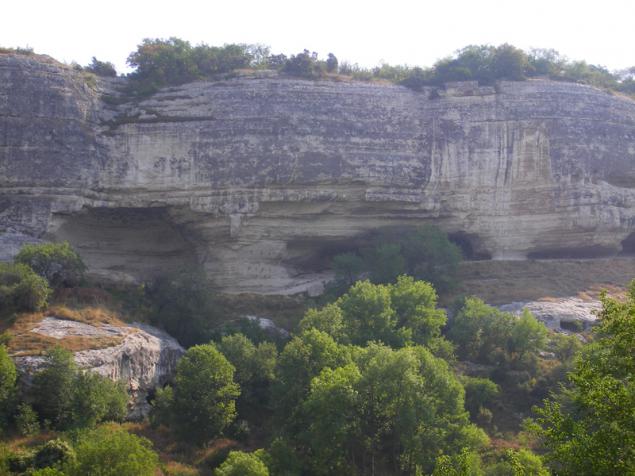
3 The road from Bakhchisarai to Calais is through Assumption cave monastery. It itself is so interesting that it deserves a separate review.

4 Two kenassas miraculously preserved. Do Karaites women and men prayed in the same building but in different parts of it.

5 View from the south side of the plateau. The road to the South gate alone, is a zigzag. Arranged so the road,
that can not be seen going from the bottom gate that delivers some inconvenience striker.
At the same time rising zigzag all the time is at gunpoint.
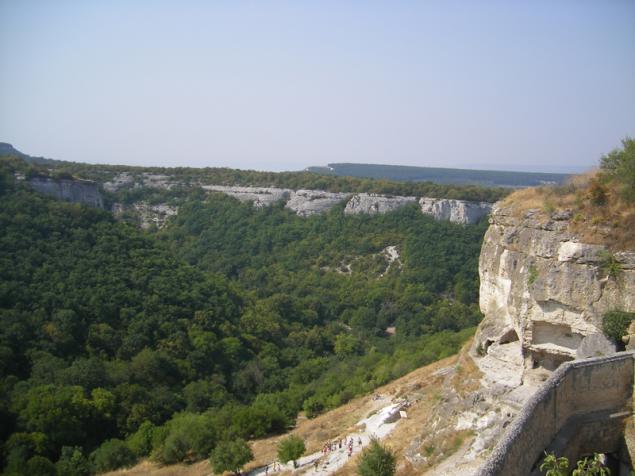
6 On both sides of Calais located two plateau but, unfortunately, they are inaccessible from all sides.

7 kenassa ... on both sides of the plaques.

8 It appears the young crown prince with his mother climbed here in such remote corners ...

9, the same

10 Bulletin on the other side of the entrance to kenassa, could not read, his eyes seemed weak ...

11 North-east slope ... Now I understand why the fortress was taken only once and cunning ...
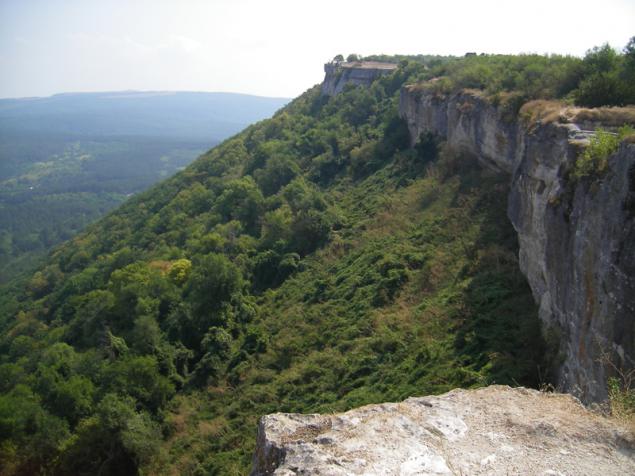
12 view from there down a bit ... at the bottom of the electricity pylon care ... no fences, so the intestine
It reduced at the edge of a pretty noticeable.

13 adjacent card ... well, not krasotischa it?

14 Part of the wall. Enclosing only the eastern side without the steep slope. It is from here and was
only the normal approach (entrance) to the fortress.

15 View from the cave ode kvartirok ... 25 etazhki rest ...

16 And here's apartment was ...

17 And the entrance to the apartment.
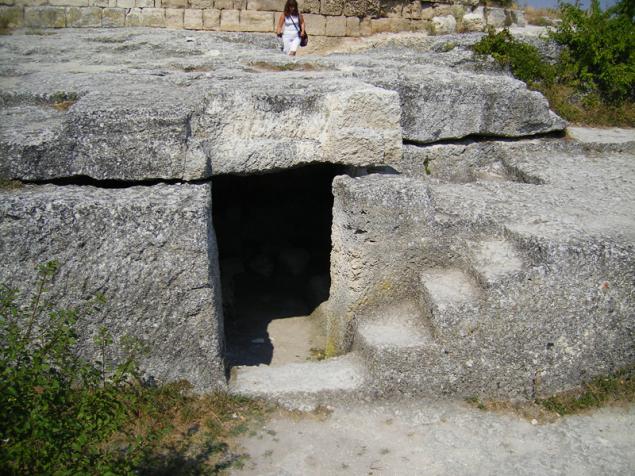
18 Gate of the eastern wall. Estesstvenno most vulnerable approach is best and strengthened.

19 said - masher for grapes.
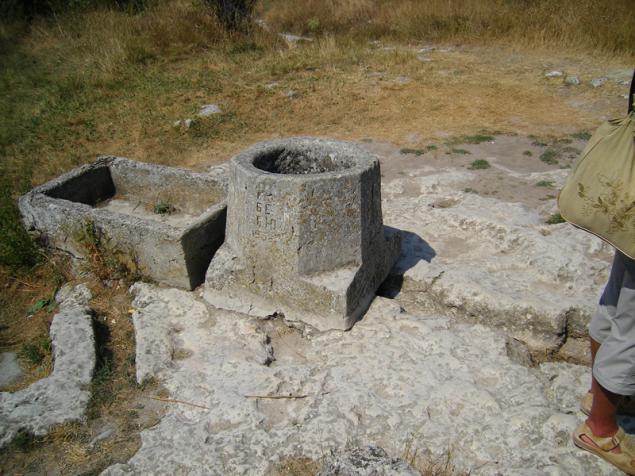
20 That's the daughter of the Golden Horde Khan Mausoleum Tokhtamysh Dzhanyke Khanum 1437
buildings.

21 ... He located him pistachio tree which supposedly settled soul Dzhanyke Khanum ... tree supposedly grants wishes ...
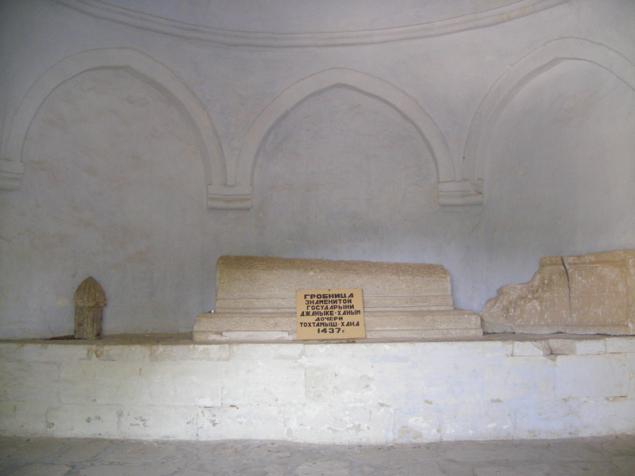
22 Road. Apparently two problems not only in Russian.
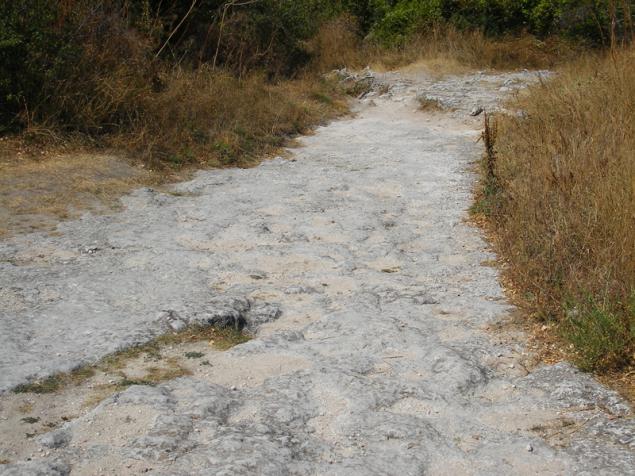
23 Yard kenassas.

24 Still Road. Similarity collapse lasts two hours.

25 View of the south gate.
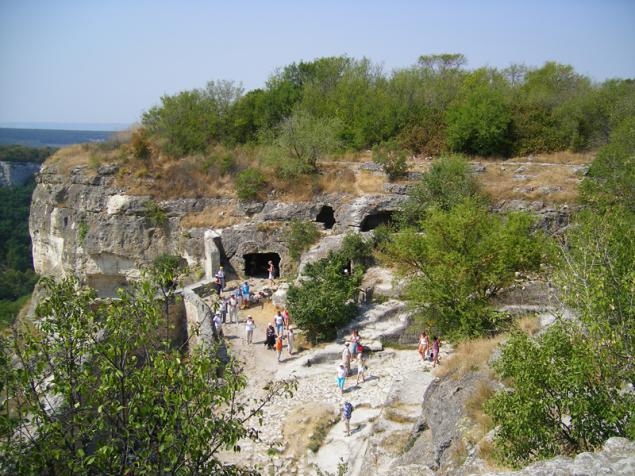
26 I do not understand ... whether under sink, or under the icon ...
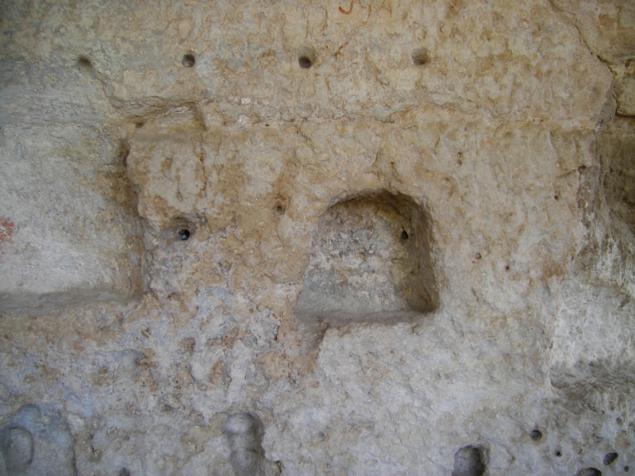
27 Even then, it was evident that the flats have selected may be bunk.
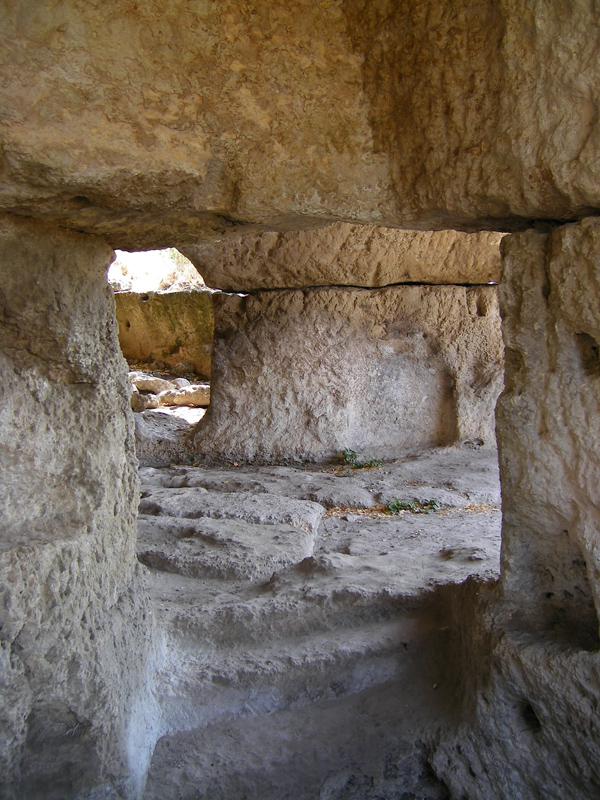
28 flats of the southern quarter window. The shape of the window guides could not say why ... so many versions.

29 Another apartment.

30 And another.

31 And another.
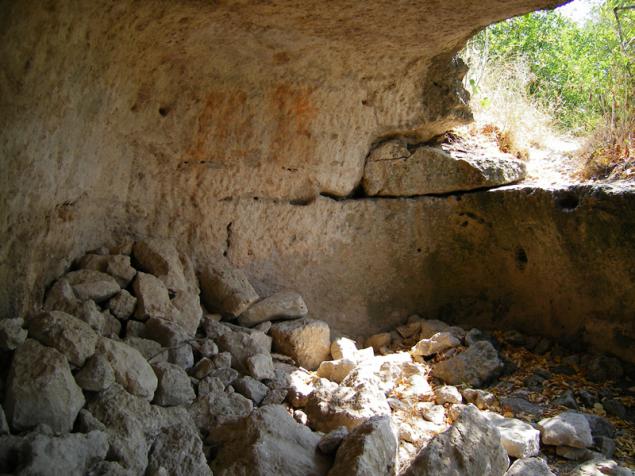
32 Again.

33

34
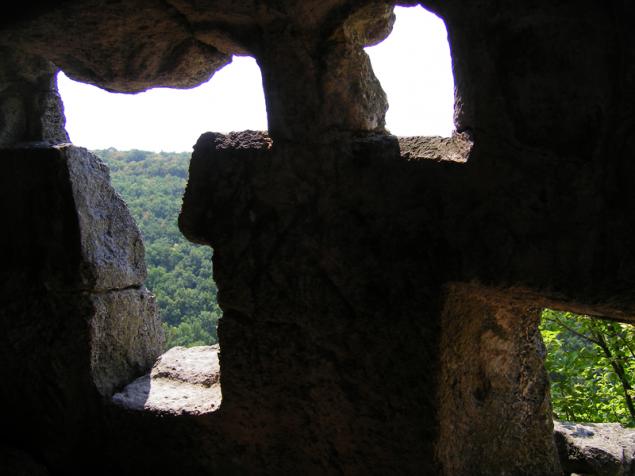
35
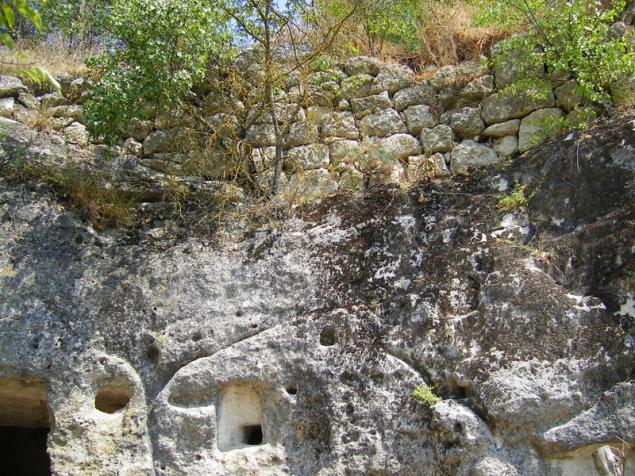
36 At the south gate.

37 just a beautiful girl, I could not resist ...

38 more rooms.
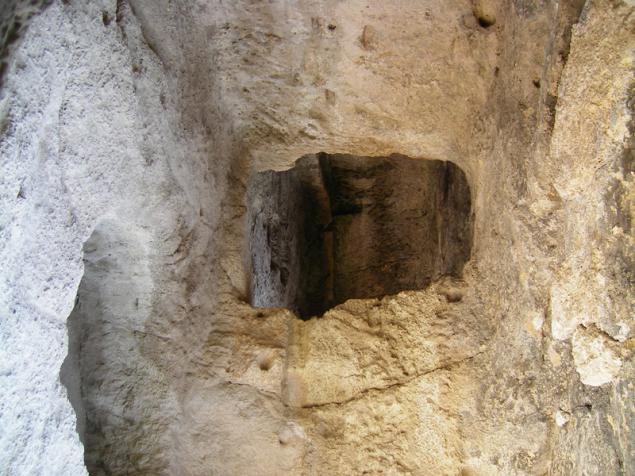
39 The only decrease in the south of the plateau was surrounded by a wall and had gates. Having broken the gates of the enemy got
Stone bag in a limited narrow corridor and the second gate, where his top defenders and merchandised.

The cell 40 at the gate from the outside. It looks like a checkpoint.

Source:
fortress city in Crimea (Ukraine), located in the district of Bakhchisarai in 2, 5 km
east of Bakhchisarai.
The name is translated from the Crimean Tatar language as a "Jewish fortress» (cufut - Jew, qale - fortress). Karaites called city Dzhuft Calais (from the Karaim language "double (na? Rnaya) Fortress" dzhuft - steam kale - fortress). Previously, the city was known as the Kirk-EF, Kirk-Or, Gevher-Kermen.
In an era Mengli I Giray the city received its current name. Typically, this is because
Karaism - religion inhabited castle Karaite people, akin to the equally Judaism,
Islam and Christianity, since all four Abrahamic religions tend recognition
Holy book of the Old Testament. However, only the latter is considered the only karaism
the source of faith. It is worth noting that in addition to the Karaites, the fortress and the community was Krymchaks professing
Orthodox Judaism. Karaites themselves after the city Dzhuft-Calais (in Karaite Dzhuft Kale -
"Steam Fortress") or just Kale (Kale - "Fortress»).
The town was founded probably in the V-VI centuries as a fortified settlement on the border of the Byzantine possessions.
It is likely that at that time it was called Fulla. The city with the same name found in different sources,
but historians can not uniquely identify which of the currently known settlements corresponds to it. The city's population
in this period consisted mainly of Alan.
In an era of domination in the Crimea Kipchak city came under their control and called Kirk-Ep.
In 1299 Kirk-EF was stormed and robbed Emir Nogay Horde army. In XIII-XIV centuries
the city was the center of a small principality, who was a vassal of the rulers
Crimean yurt Golden Horde. From the XIV century, the city began to settle and by the time the Karaites
Education Crimean Khanate they are likely to have accounted for most of the population of the city.
Kirk-EF was the seat of the first independent Crimean Khan Haji Giray I. After the base at
Mengli I Giree Bakhchisarai Khan's capital was moved there. During the Crimean Khanate fortress
It was the place of detention of high-ranking prisoners of war, and was located in the same state
Mint.
After joining the Crimea to the Russian Empire, the Karaites began to leave the castle and move to
other Crimean cities. By the end of the XIX century Calais was completely abandoned by its inhabitants.
The castle stayed a family caretaker.
Currently, most of Calais is in ruins.
In the west, the oldest part of it survived numerous caves carved into the economic
premises, the ruins of the mosque and the mausoleum of the daughter of the Golden Horde Khan Tokhtamysh Dzhanyke Khanum 1437
buildings. Also well preserved two kenassas (Karaite Temple) and one residential homestead,
consisting of two houses. Kenassas Karaite community is now being restored, and in the residential estate of
located exhibition devoted to the culture of the Karaites. In the eastern part of the city was not
surviving mint where the coins were minted Crimean and many residential buildings.
ru.wikipedia.org/wiki/%D0%A7%D1%83%...%B0%D0%BB%D0%B5
40 ph 1 Crimean midlands - one of the most beautiful landscapes.

2 Fortress and the city is located on a plateau, sheer on three sides.

3 The road from Bakhchisarai to Calais is through Assumption cave monastery. It itself is so interesting that it deserves a separate review.

4 Two kenassas miraculously preserved. Do Karaites women and men prayed in the same building but in different parts of it.

5 View from the south side of the plateau. The road to the South gate alone, is a zigzag. Arranged so the road,
that can not be seen going from the bottom gate that delivers some inconvenience striker.
At the same time rising zigzag all the time is at gunpoint.

6 On both sides of Calais located two plateau but, unfortunately, they are inaccessible from all sides.

7 kenassa ... on both sides of the plaques.

8 It appears the young crown prince with his mother climbed here in such remote corners ...

9, the same

10 Bulletin on the other side of the entrance to kenassa, could not read, his eyes seemed weak ...

11 North-east slope ... Now I understand why the fortress was taken only once and cunning ...

12 view from there down a bit ... at the bottom of the electricity pylon care ... no fences, so the intestine
It reduced at the edge of a pretty noticeable.

13 adjacent card ... well, not krasotischa it?

14 Part of the wall. Enclosing only the eastern side without the steep slope. It is from here and was
only the normal approach (entrance) to the fortress.

15 View from the cave ode kvartirok ... 25 etazhki rest ...

16 And here's apartment was ...

17 And the entrance to the apartment.

18 Gate of the eastern wall. Estesstvenno most vulnerable approach is best and strengthened.

19 said - masher for grapes.

20 That's the daughter of the Golden Horde Khan Mausoleum Tokhtamysh Dzhanyke Khanum 1437
buildings.

21 ... He located him pistachio tree which supposedly settled soul Dzhanyke Khanum ... tree supposedly grants wishes ...

22 Road. Apparently two problems not only in Russian.

23 Yard kenassas.

24 Still Road. Similarity collapse lasts two hours.

25 View of the south gate.

26 I do not understand ... whether under sink, or under the icon ...

27 Even then, it was evident that the flats have selected may be bunk.

28 flats of the southern quarter window. The shape of the window guides could not say why ... so many versions.

29 Another apartment.

30 And another.

31 And another.

32 Again.

33

34

35

36 At the south gate.

37 just a beautiful girl, I could not resist ...

38 more rooms.

39 The only decrease in the south of the plateau was surrounded by a wall and had gates. Having broken the gates of the enemy got
Stone bag in a limited narrow corridor and the second gate, where his top defenders and merchandised.

The cell 40 at the gate from the outside. It looks like a checkpoint.

Source:
ISTOLET (fr. Pistolet, it. Pistole, from the Czech. Pist'ala - pipe or handguns)
Pytytes not hide the problem!






